When Repetition Becomes Problematic
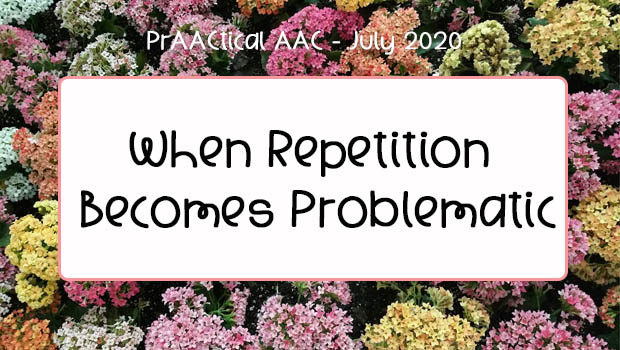
Have you worked with learners like these?
- Shameka wore a favorite t-shirt, featuring her beloved Moana, to her teletherapy session. She pointed to it to show her therapist and used her AAC device to say “Moana.” After acknowledging her Moana shirt and having a brief conversation about it, the therapist was ready to move on to the activities planned for that session. Shameka continued to bring up Moana many times throughout the session.
- Bryce’s love of pizza is no secret. It’s so important to him that Bryce can say ‘pizza’ with a word approximation, sign it with his unique version of the manual sign, or use a manual communication board or SGD to say the word. Most days, that’s a very good thing. But sometimes, Bryce starts mentioning pizza early in the morning and brings it up a few times an hour for the rest of the day.
Many of us have worked with students like Shameka and Bryce, who sometimes repeat the same word so often that it becomes an impediment to learning and to connecting with others. In many instances, our knowledge of the student help us discern the meaning or at least make educated guesses. It’s pretty reasonable to assume, for example, that when Bryce overhears his parents talking about dinner and signs ‘pizza’ that he’s making a menu suggestion or a downright request. But even after his parents acknowledge and agree to pizza for dinner, Bryce continues to say and sign the word frequently over the next few hours. In the beginning, his parents acknowledged him, agreed with him, and modeled for him (e.g., “Yes, we are going to eat PIZZA”). That didn’t seem to quite satisfy Bryce, though, and when he continued to say the word, his parents eventually began re-directing him (e.g., “We already talked about PIZZA for dinner. Now we’re doing puzzles with Grandma. Can you help her with this piece?”). That distracted Bryce for momentarily but within the hour he began talking about pizza once again.
Repetition can become problematic for several reasons, the most important of which is that it’s often an ineffective way for the learner to get their communicative needs met. They may lack the language skills to express their true intent and have to rely on their partners’ interpretation. Or, the learner may have the language skills that they need to effectively express their intent, but those skills are not accessible in the moment. How many of us find ourselves grasping for a word or being inarticulate when we’re tired, really frustrated, or just distracted? Sometimes the problem is not that the language skill is missing, just that it is out of reach at this moment in time.
Often, we’re not sure WHY they keep saying the word over and over, especially once a presumed request is granted. True, it can also be annoying but the bigger problem is that communicators who do this aren’t really getting their point across.
Here are some things to try in those situations.
- Model it: By modeling it using the learner’s tools for communication, we’re opening up avenues to more easily access an array of words. Once we’re using a device to say ‘pizza,’ it can help the learner organize those thoughts and pivot to related words that help them to better express their intent. “Eat.” “Cook” “When.” Each additional word gives us a clue to the underlying intent and that helps us respond more appropriately.
- Expand the utterance: “Pizza” can become “Pizza for dinner,” “We had pizza on Friday,” or “You really like pizza.”
- Keep trying to discern the communicator’s intent: Is it truly a request, or do they just want to talk about the thing that they keep bringing up? Maybe they have a question about it, such as WHERE they are getting pizza from, whether they are going to MAKE it at home, or WHAT kind of pizza they will have. Maybe the learner is thinking about a past encounter with pizza, like when they tried pineapple topping and hated it or when they got a heart-shaped pizza for Valentine’s day. Maybe they’re thinking of a book or video where pizza played a role. Maybe they’re reminiscing over the last time they were in school and had a pizza party. We’re hearing ‘pizza’ but that may only be the tip of the iceberg that gives us a tiny clue into what the learner is really wanting to talk about.
- Use a visual support: Because language skills to explain their true intent may be missing, still emerging, or just inaccessible, it can be hard to figure out what is meant. When used on a regular basis, visual supports such as the ones shown here can be helpful. We can use these as a standard approach to resolving communication breakdowns and pull them out when the repetition seems indicative of unmet needs.
- “Do you have a QUESTION about it, or do you need to TALK about it?”
- “Should we talk about how you FEEL about it, WHERE it is, or SOMETHING ELSE?”
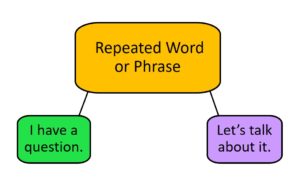
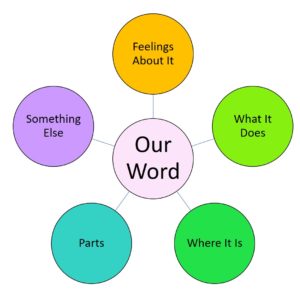
Saying the same thing over and over isn’t always problematic, but when it doesn’t seem to truly represent what the learner is trying to communicate, we turn to strategies like these to help them move forward. Do you have tried-and-true ways of supporting communicators who repeat themselves? We’d love to hear about it.
Filed under: Featured Posts, PrAACtical Thinking
Tagged With: Language facilitation strategies, partner skills & training, visual supports
This post was written by Carole Zangari

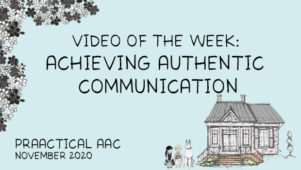
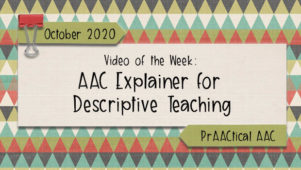


2 Comments
Interesting piece, Carole!
You are talking mostly here about signing which I don’t feel qualified to talk about, but I have thought about this issue a lot for my young users on devices. Your solutions assume not just intent but premeditation. Fair enough, but maybe we are missing the fact that devices do not just talk to the partner but to the user herself. In natural speech, when we speak a word, as I understand it, its renewed activation is inhibited for a very brief moment (less than a second). For a device user the just as the kid might be trying to mentally activate a new word to achieve a communication goal, the device speaks the last word that was selected (this is a full second after the previous button was chosen and selected) – so in effect the device is speaks the last word at the very moment the process of deciding on the next one is going on – My suggestion is that for some kids this may prime the re-selection of that word. I am not suggesting that this is the cause, but it is a physical fact of device use and may be a contributing factor
This is a really interesting way of framing it. I am working with a student whose family stopped using the communication book sent from school because they said it’s not relevant for home- all he ever used it for was to say “I want biscuit”
There’s some work to be done on making the book more relevant for home activities (and expanding opportunities to use it beyond snack / mealtimes!) but equally, talking about the different functions of communication could be really helpful, and providing other core words that could be connected to “biscuit” to support with that.